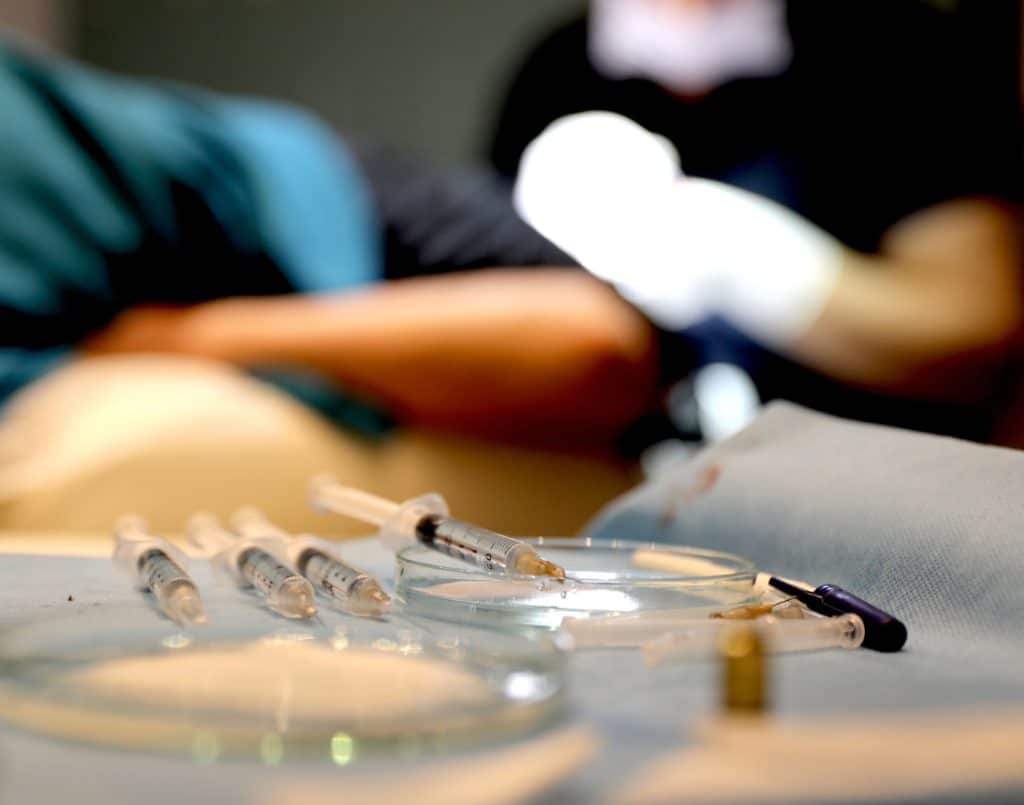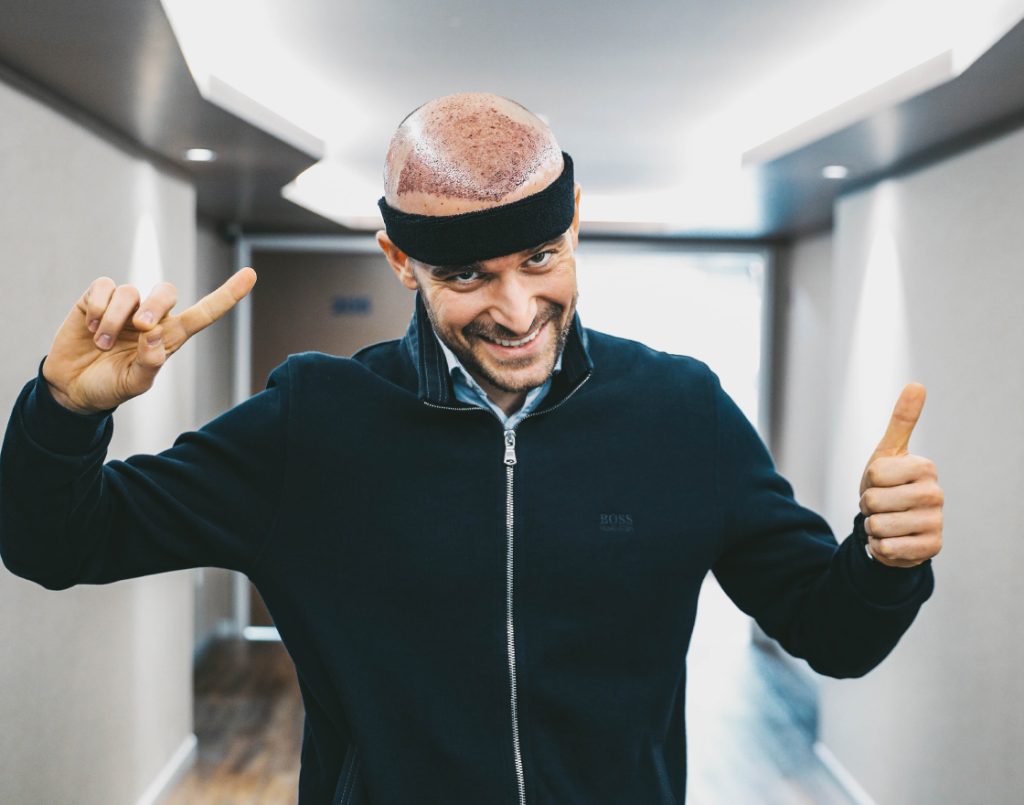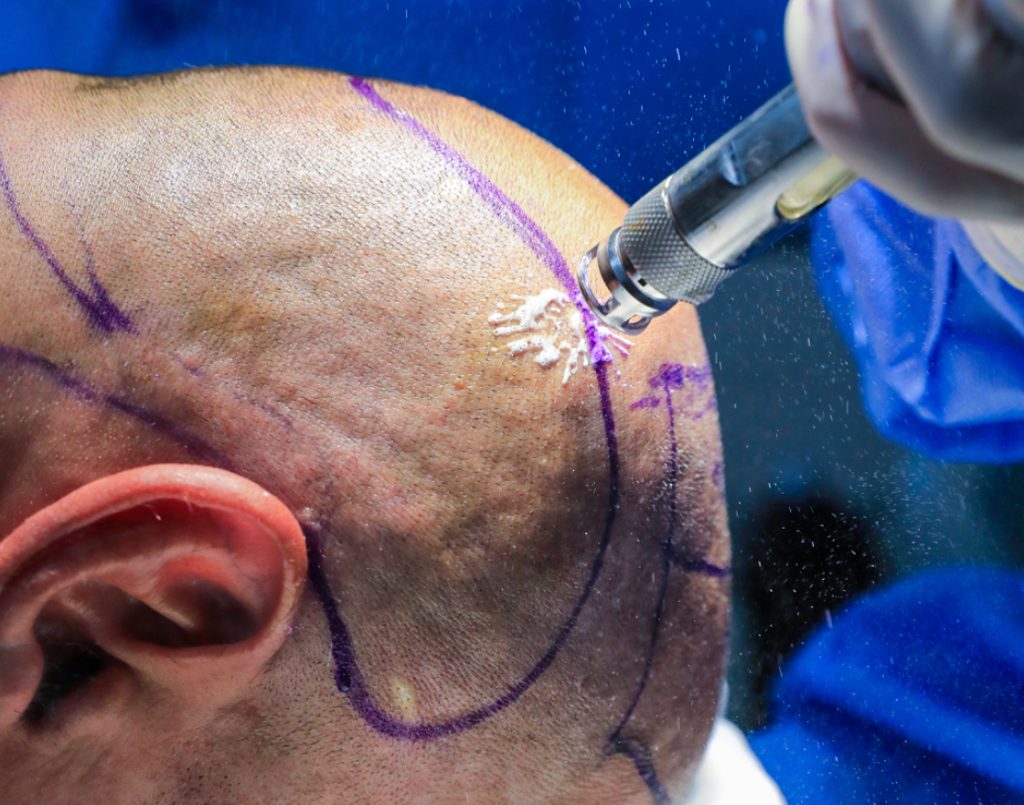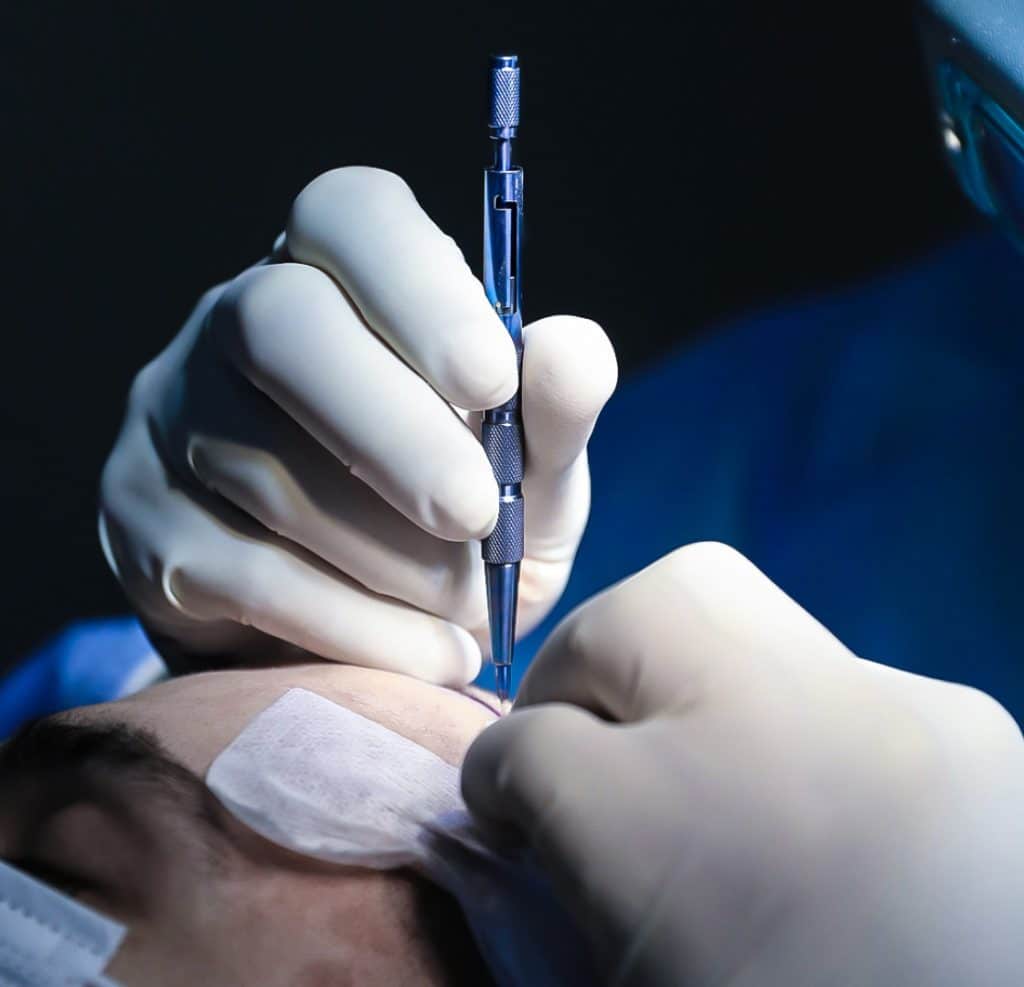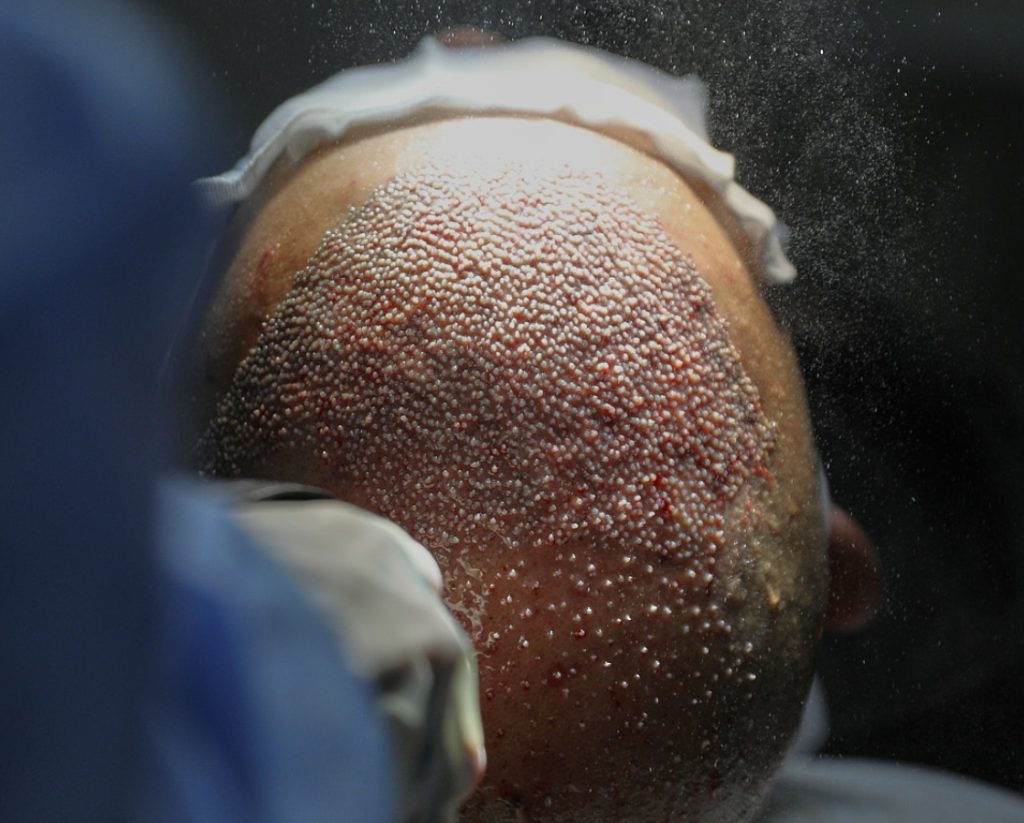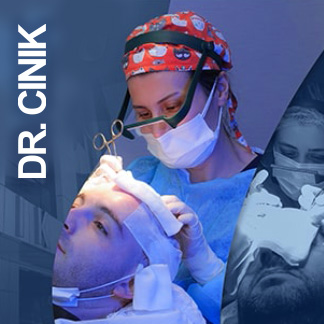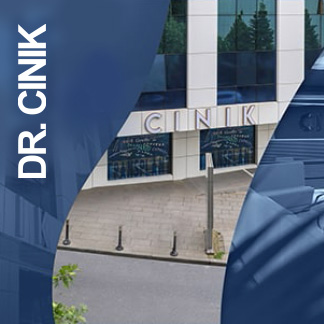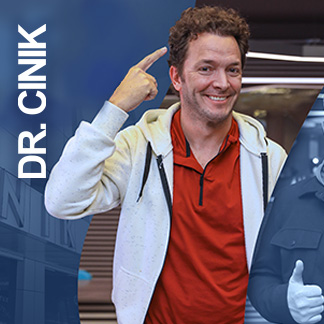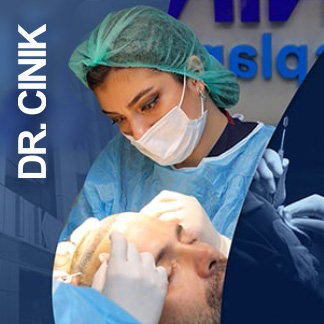
Needle-Free Anaesthesia for Hair Transplants
Virtually pain-free procedure
Ideal for patients with needle phobia
Significant reduction in stress and anxiety
+ 20 YEARS OF EXCELLENCE
GLOBAL LEADER
NATURAL RESULTS
YOUR NEEDLE-FREE HAIR TRANSPLANT
Dr Cinik’s clinic is proud to offer hair transplants using needle-free anaesthesia technology – a major innovation in the field of hair restoration.
While modern techniques have considerably reduced the discomfort associated with hair transplants, some patients still experience anxiety about the needles traditionally used for local anaesthesia. Our advanced needle-free system represents an ideal solution for those suffering from trypanophobia (fear of needles).
This cutting-edge approach allows local anaesthetic to be administered without using conventional needles, offering a much more comfortable and less stressful experience. Our commitment is to ensure each patient undergoes the procedure in the best possible conditions, eliminating sources of anxiety for a positive hair transplant experience.
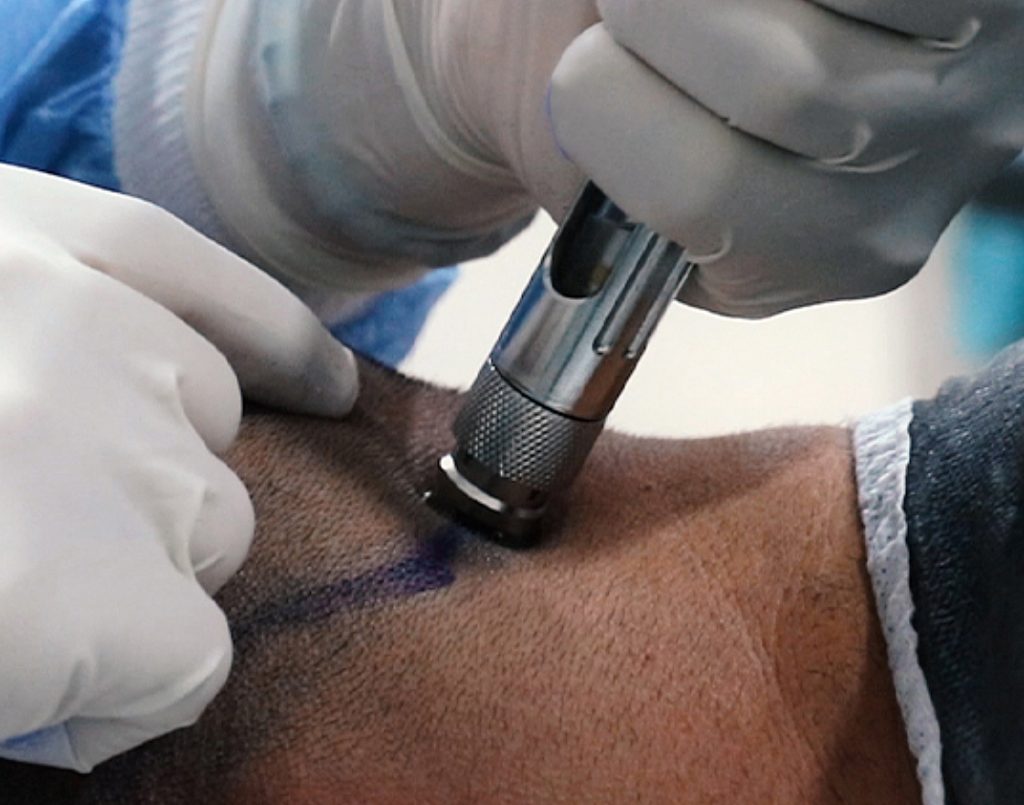
IS A HAIR TRANSPLANT PAINFUL?
Modern hair transplant procedures, such as FUE (Follicular Unit Extraction) and DHI (Direct Hair Implant), are generally well-tolerated by patients. The discomfort felt can be compared to that of a routine dental check-up.
Hair transplantation is a minimally invasive procedure that involves:
For the FUE technique, three main phases:
- Extraction of follicular units from the donor area
- Opening of microchannels in the recipient area
- Precise implantation of the grafts
The DHI technique simplifies the process by combining the last two steps:
- Extraction remains identical to FUE
- Grafts are directly implanted with the Choi pen, without requiring prior incisions
Although these procedures are relatively comfortable, local anaesthesia is always necessary to ensure a pain-free experience. It’s precisely during this anaesthesia phase that our needle-free technology provides significant added value.
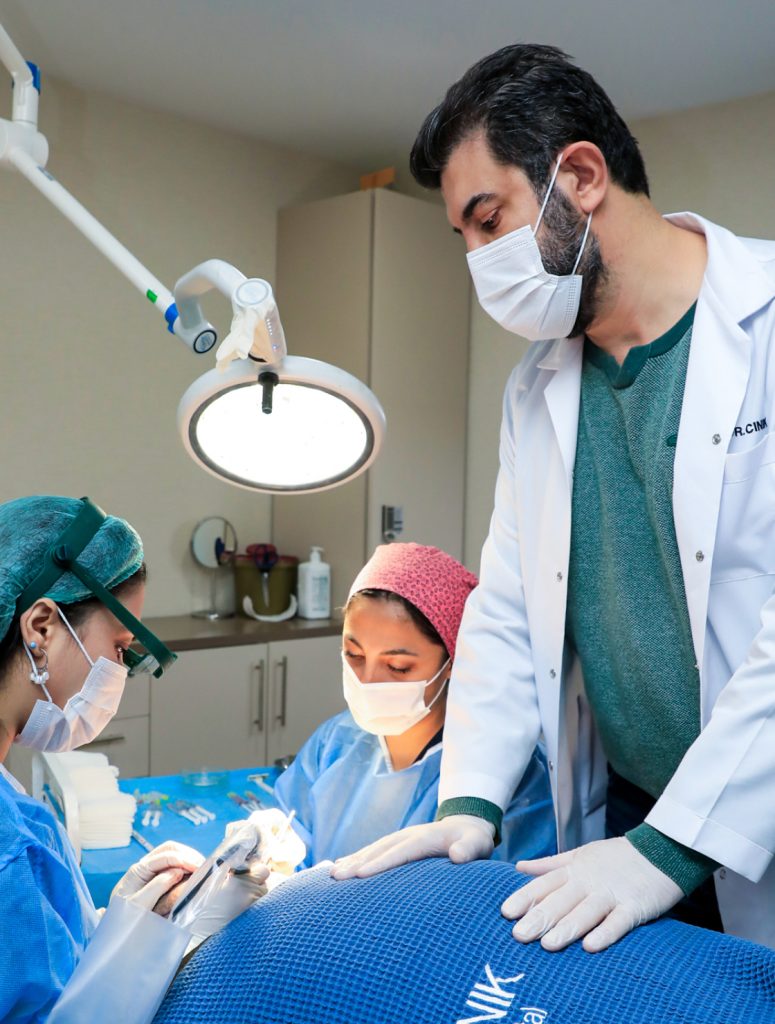
HOW DOES NEEDLE-FREE ANAESTHESIA WORK?
An innovative process for a stress-free experience
PREPARATION OF THE TREATMENT AREA
Before beginning, our medical team carefully cleanse the scalp and apply an antiseptic solution to prepare the area for anaesthesia. This process ensures an optimal sterile environment for the procedure.
PRESSURE-BASED DELIVERY OF ANAESTHETIC
The anaesthetic is administered into the tissues using a high-pressure spray system. This specialised device propels the anaesthetic product through the superficial layers of the skin without using a traditional needle. This method allows for effective penetration of the product.
BLOCKING OF SENSORY NERVES
The anaesthetic medication diffuses rapidly into the skin and subcutaneous tissues, reaching and blocking the nerve endings that transmit pain signals. This step creates a localised numbing effect without the unpleasant sensation associated with conventional injections.
COMPLEMENTARY ANAESTHESIA IF NECESSARY
Once the scalp surface is numbed, the doctor can, if necessary, proceed with deeper anaesthesia for patients who no longer feel the pain of injection. This process ensures optimal comfort throughout the procedure.
UNIFORM DISTRIBUTION OF ANAESTHESIA
The medical team gently massage the scalp to ensure uniform distribution of the anaesthetic product throughout the treatment area. This step is essential to guarantee complete and homogeneous anaesthetic coverage.
BEGINNING OF THE TRANSPLANT PROCEDURE
Once the anaesthesia is fully effective, the transplant procedure can begin under optimal comfort conditions for the patient. The anaesthetic effect lasts several hours, largely covering the duration of the procedure.

Our needle-free anaesthesia technology offers an ideal solution for anxious patients. Speak with our experts to discover how we can make your hair transplant experience as comfortable as possible.
OUR VIDEOS
FREQUENTLY ASKED QUESTIONS ABOUT NEEDLE-FREE ANAESTHESIA
DOES NEEDLE-FREE ANAESTHESIA COMPLETELY ELIMINATE THE USE OF NEEDLES?
No, the term “needle-free” can be somewhat misleading. This technique allows for initial numbing of the skin without using conventional needles, thanks to a high-pressure propulsion system. Once this first superficial anaesthesia is performed, complementary injections may be necessary for deeper anaesthesia, but these are no longer painful as the surface is already numbed. The main advantage is that the patient doesn’t experience the injection sensation, thus eliminating the most uncomfortable and anxiety-inducing aspect of the procedure.
IS THIS METHOD AS EFFECTIVE AS TRADITIONAL ANAESTHESIA?
Absolutely. Needle-free anaesthesia offers comparable efficacy to traditional anaesthesia in terms of pain control during the procedure. The main difference lies in the initial administration method of the anaesthetic product, which is much more comfortable for the patient. Clinical studies have demonstrated that this technique achieves a level of anaesthesia just as deep and lasting as conventional methods, thus ensuring a pain-free procedure.
IS NEEDLE-FREE ANAESTHESIA SUITABLE FOR ALL PATIENTS?
This technique is suitable for the vast majority of patients, but it is particularly recommended for those suffering from trypanophobia (fear of needles) or who experience significant anxiety at the thought of receiving injections. Certain specific medical conditions may require personalised assessment by our medical team. During your initial consultation, our specialists will determine if this approach is optimal in your particular case.
HOW LONG DOES THE EFFECT OF NEEDLE-FREE ANAESTHESIA LAST?
The anaesthetic effect generally lasts between 3 and 5 hours, which is largely sufficient to cover the complete duration of the hair transplant procedure. If necessary, additional applications can be performed during the intervention to maintain an optimal level of comfort. Our medical team continuously monitor the effectiveness of the anaesthesia throughout the procedure to ensure a pain-free experience.
ARE THERE ANY SPECIFIC SIDE EFFECTS TO THIS TECHNIQUE?
Needle-free anaesthesia generally presents fewer side effects than traditional methods. It significantly reduces the risks of bruising, inflammation, and post-operative discomfort at injection sites. Some patients may experience a slight pressure sensation during application of the high-pressure system, but this is very brief and generally well-tolerated. In rare cases, temporary sensitivity may persist in certain areas, requiring complementary anaesthesia.
Our needle-free anaesthesia technology offers an ideal solution for anxious patients. Speak with our experts to discover how we can make your hair transplant experience as comfortable as possible.

Maximising Your Comfort During a Hair Transplant
The prospect of a hair transplant can generate quite a bit of anxiety, particularly for those with an apprehension of needles. That’s why Dr Cinik’s clinic has integrated needle-free hair transplant technology into its protocols, radically transforming the patient experience.
An Innovative Solution to Eliminate Discomfort
Our Comfort-in system uses jet injection technology, a revolutionary method that allows local anaesthetic to be administered without piercing the skin with a conventional needle. The product is propelled through the skin under high pressure, creating a micro-diffusion that effectively reaches nerve endings.
This approach presents several significant advantages:
- No pricking sensation: the discomfort linked to needle penetration is completely eliminated
- Reduced bleeding: less skin trauma means less bleeding during the procedure
- Decreased post-operative swelling: inflammation after the intervention is considerably reduced
- Accelerated recovery: patients generally benefit from a faster and more comfortable convalescence
A Transformed Hair Transplant Experience
For many patients, the most dreaded step of a hair transplant is the initial anaesthesia. Our needle-free technology eliminates this source of anxiety, allowing patients to relax from the beginning of the procedure.
Although FUE and DHI techniques are already considered relatively comfortable, the addition of needle-free anaesthesia takes the patient experience to a superior level of comfort. Patients report significantly higher satisfaction and considerably reduced stress levels.
Our medical team are specially trained in the use of this advanced technology and ensure its effectiveness is optimised for each patient. We adapt our approach according to your specific needs and anxiety level to guarantee a tailored experience.
Ideal for Anxious Patients
If you’ve always postponed your decision to undergo a needle-free hair transplant due to needle apprehension, our needle-free anaesthesia technology could be the solution you’ve been waiting for. We invite you to discuss this option with our team during your initial consultation, so we can develop together a treatment plan perfectly adapted to your concerns.
Dr Cinik is committed to remaining at the forefront of innovation to offer his patients the most comfortable and effective solutions in hair restoration.

